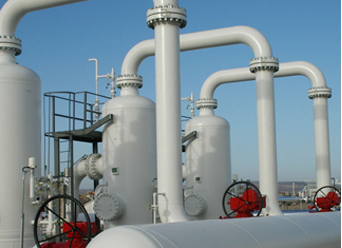Khmer
- Afrikaans
- Albanian
- Amharic
- Arabic
- Armenian
- Azerbaijani
- Basque
- Belarusian
- Bengali
- Bosnian
- Bulgarian
- Catalan
- Cebuano
- Corsican
- Croatian
- Czech
- Danish
- Dutch
- English
- Esperanto
- Estonian
- Finnish
- French
- Frisian
- Galician
- Georgian
- German
- Greek
- Gujarati
- Haitian Creole
- hausa
- hawaiian
- Hebrew
- Hindi
- Miao
- Hungarian
- Icelandic
- igbo
- Indonesian
- irish
- Italian
- Japanese
- Javanese
- Kannada
- kazakh
- Khmer
- Rwandese
- Korean
- Kurdish
- Kyrgyz
- Lao
- Latin
- Latvian
- Lithuanian
- Luxembourgish
- Macedonian
- Malgashi
- Malay
- Malayalam
- Maltese
- Maori
- Marathi
- Mongolian
- Myanmar
- Nepali
- Norwegian
- Norwegian
- Occitan
- Pashto
- Persian
- Polish
- Portuguese
- Punjabi
- Romanian
- Russian
- Samoan
- Scottish Gaelic
- Serbian
- Sesotho
- Shona
- Sindhi
- Sinhala
- Slovak
- Slovenian
- Somali
- Spanish
- Sundanese
- Swahili
- Swedish
- Tagalog
- Tajik
- Tamil
- Tatar
- Telugu
- Thai
- Turkish
- Turkmen
- Ukrainian
- Urdu
- Uighur
- Uzbek
- Vietnamese
- Welsh
- Bantu
- Yiddish
- Yoruba
- Zulu
Telephone: +86 13120555503
Email: frank@cypump.com
ធ្នូ . 11, 2024 11:49 Back to list
slurry pump working
Understanding the Working Mechanism of Slurry Pumps
Slurry pumps play a vital role in various industries, particularly in the mining, construction, and wastewater management sectors, by efficiently transporting mixtures of liquids and solids. The design and operation of these pumps are tailored to handle challenging materials, including abrasive slurries, and to ensure reliable performance in demanding environments. This article explores the working mechanism of slurry pumps, their applications, components, and maintenance practices, ensuring a comprehensive understanding of this essential equipment.
How Slurry Pumps Work
At the core of a slurry pump’s operation is its ability to move a mixture of solid particles suspended in a liquid. The pump utilizes centrifugal force, a principle derived from basic physics, to achieve this movement. When the pump is activated, the impeller, a rotating component, spins rapidly. This action creates a low-pressure area at the impeller's eye, drawing the slurry into the pump.
Once the slurry enters the pump, the impeller transfers kinetic energy to the fluid, increasing its velocity. As the slurry moves outward from the center of the impeller, it encounters a volute or diffuser—a stationary component that converts the kinetic energy into pressure energy. The pressurized slurry is then discharged through a discharge pipe, allowing it to travel through pipelines or be directed to specific locations in the facility. This efficient transfer mechanism is where slurry pumps excel compared to standard pumps, as they are optimized to handle the complexities of slurry flow.
Components of Slurry Pumps
Slurry pumps are composed of several key components designed for durability and optimal performance
1. Impeller The heart of the pump, it is usually made from high-chrome or elastomer materials to withstand wear from abrasive slurries.
2. Casing This outer shell encases the impeller and helps in directing the flow of slurry. It must be designed to handle high pressure and resist corrosion.
3. Suction and Discharge Flanges These are connection points for the inlet and outlet pipes, ensuring a secure fit and preventing leaks.
4. Seal and Bearing Assembly This component ensures that the pump operates smoothly and reduces the risk of leakage.
5. Drive Mechanism Typically an electric motor, this powers the impeller's rotation. The type and size of the drive can vary based on the pump's capacity requirements.
Applications of Slurry Pumps
slurry pump working

Slurry pumps are utilized in a wide array of applications
- Mining and Minerals Processing They transport slurries containing minerals, ores, and other particulate materials efficiently throughout the extraction and processing stages.
- Construction In construction projects, slurry pumps are used to manage the removal of excavated materials mixed with water, particularly in trenching and tunnel works.
- Wastewater Treatment These pumps help in the handling and processing of sewage and industrial effluents, ensuring that solids are effectively moved through treatment facilities.
- Drilling In the oil and gas industry, slurry pumps are employed in drilling operations to remove cuttings and to circulate the drilling fluid.
Maintenance Best Practices
To ensure the longevity and efficiency of slurry pumps, regular maintenance is crucial. Here are some best practices
1. Regular Inspection Periodic checks of the impeller, casing, and seals are essential to identify wear and potential issues early.
2. Cleaning Keeping the pump and its components free from debris and sediment helps maintain efficiency and prevents blockages.
3. Lubrication Adequate lubrication of bearings and seals is necessary to reduce friction and wear, extending the pump's lifespan.
4. Monitoring Performance Employing diagnostic tools to monitor flow rates, pressures, and vibrations can help detect abnormal conditions early.
5. Replacement of Worn Parts Timely replacement of components that show signs of wear can prevent extensive damage and downtime.
In conclusion, slurry pumps are indispensable in numerous industrial applications, serving a critical function in the transportation of abrasive liquids and solids. By understanding their working mechanism, components, and maintenance requirements, operators can ensure optimal performance and longevity, consequently enhancing productivity and efficiency in their respective operations.
-
Heavy-Duty Mining Sludge Pumps - Wear-Resistant Slurry Handling
NewsAug.02,2025
-
Horizontal Split Case Pump with GPT-4 Turbo | High Efficiency
NewsAug.01,2025
-
ISG Series Pipeline Pump - Chi Yuan Pumps | High Efficiency, Durable Design
NewsAug.01,2025
-
Advanced Flue Gas Desulfurization Pump with GPT-4 Turbo | Durable & Efficient
NewsJul.31,2025
-
ISG Series Vertical Pipeline Pump - Chi Yuan Pumps | Advanced Hydraulic Design&Durable Construction
NewsJul.31,2025
-
ISG Series Vertical Pipeline Pump - Chi Yuan Pumps | Energy Efficient & Low Noise
NewsJul.31,2025










